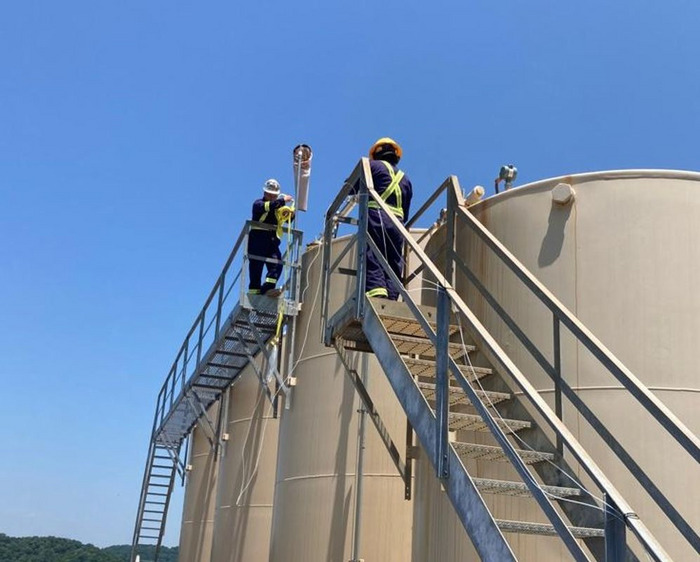
Researchers at West Virginia University announced Tuesday a grant from the U.S. Department of Energy that will allow them to study methane emissions from liquid storage tanks across West Virginia, Pennsylvania, and Ohio.
The $5.5 million grant was awarded to the West Virginia University Center for Alternative Fuels, Engines, and Emissions. It will fund research over the next three years to understand where and why methane and other gas leaks happen and their effects on local air quality and global climate. The project, led by Derek Johnson, associate professor at the Benjamin M. Statler College of Engineering and Mineral Resources, will measure methane and other volatile organic compounds and hazardous air pollutants emitted from liquid storage tanks “upstream” from extraction sites, as well as “midstream” at various sites along the routes oil and gas take on their way to refining and processing facilities.
“Methane is the second most emitted greenhouse gas in the U.S. after carbon dioxide,” Johnson said. Methane is also 28 times more potent than carbon dioxide at trapping heat in the atmosphere, he said. Gas and petroleum systems are the second largest source of U.S. methane emissions after the agriculture sector, he said.
Johnson said liquid storage tanks are “complex systems” and may be vented to the atmosphere or emissions control devices. They may also lose gases when they are drained or filled, he said, or when they simply “breathe” day in and day out due to changes to tank temperatures and pressures.
“Tank emissions and leak rates have been highly variable for methane and other volatile organic compounds, so we need a better understanding of their activity. Then we can improve models for predicting emissions and ultimately develop solutions to mitigate them,” Johnson said. “We’ll work with site operators to document factors that can contribute to methane emissions: temperatures and pressures, production and throughput, internal chemical composition of liquid and vapor phases, as well as factors such as open or damaged valves, hinges, or seals.”
Once researchers have made an inventory of oil and gas storage tanks, they will deploy tools and technologies to sample the air and predict various emissions over time. The researchers will also conduct short-term emissions monitoring at 100 or more sites. The team will then use the data to update decades-old software models to predict emissions and begin developing new tools for reporting leaks.